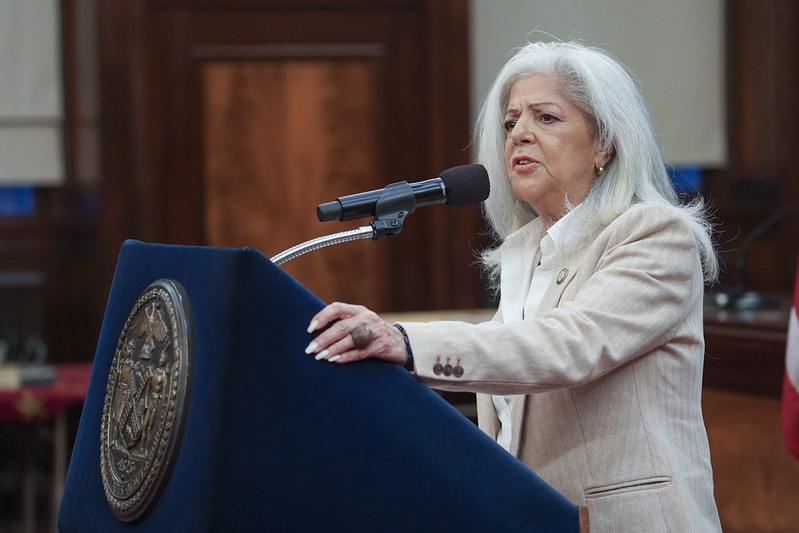A radioactive, former industrial site on the Ridgewood/Bushwick border that’s already part of the federal Superfund program was recently been added to the state’s Superfund initiative, the Department of Environmental Conservation (DEC) announced.
Recent investigations by city, state and federal agencies at the former Wolff-Alport Chemical Company site, located at 1125 to 1139 Irving Ave. and 1514 Cooper Ave. in Ridgewood, detected radioactivity above background levels within sections of the on-site buildings, the soil beneath and around the facility, and above the area’s adjacent sidewalks, streets and sewers.
As of Oct. 6, the Wolff-Alport Chemical Company site was added to DEC’s Registry of Inactive Hazardous Waste Disposal Sites as a Class 2 site that presents a significant threat to public health and/or the environment.
According to the federal Environmental Protection Agency (EPA), during a 2009-2010 investigation by the New York City Department of Design and Construction (DDC), it was found that “visibly contaminated soil is typically located within the top 4 feet under the pavement/ground surface; there is one area where the visibly contaminated soil is approximately 8 to 10 feet deep.”
In more recent years, a study found that radioactivity levels were found in the sewer system nearly a quarter mile away from the site.
The EPA further states that in 2013, “an investigation performed on behalf of the New York City Department of Environmental Protection [DEP] detected radiological constituents above background concentrations in the sewer system at least as far away as the intersection of Irving Avenue and Halsey Street, approximately 1/4 mile away from the site.”
On May 12, 2014, the site was added to the National Priorities List.
According to the DEC, the Wolff-Alport site is contaminated with radioactive thorium-232 and radon-220 — which is a key component of the thorium-232 decay series and is a radioactive gas commonly referred to as thoron — which emanates from surfaces where thorium-232 is present.
Between 1920 and 1954, Wolff-Alport extracted rare earth metals from monazite sand through a process that led to the production of a sludge containing radioactive thorium. This element was commonly used during the Atomic Age in the development of nuclear weapons and reactors.
For years, workers simply dumped the radioactive sludge into nearby sewers, a practice halted in 1947 at the order of the federal Atomic Energy Commission. The agency purchased the thorium sludge for its own purposes for the next seven years until Wolff-Alport shut down in 1954.
To address the potential health risk at the site, the EPA installed a combination of lead, steel and concrete shielding in several buildings at the site and along a portion of the Irving Avenue sidewalk that is adjacent to the site, as well as a radon mitigation system inside one of the buildings. The former rail spur behind the on-site buildings was also covered with a layer of rock and clean fill.
It was found in subsequent surveys that these steps have reduced exposure rates by between 69 to 94 percent, while radon concentrations were brought down by more than half.
The DEC is set to further investigate and clean up the site.
While the levels of radiation at the Wolff-Alport site are far less dangerous than other radioactive hotspots across the globe — such as Fukushima in Japan and Chernobyl in Ukraine — prolonged exposure to radon and thorium puts people at risk of developing cancer and other illnesses.
“The [DEC] has and will continue to responsibly monitor the progress of cleanup of the Wolff-Alport Chemical Company Superfund Site in Queens to ensure compliance with the Environmental Conservation Law and regulations in order to protect public health and the environment,” said a spokesperson for the DEC. “However, EPA is the lead agency on the cleanup of this site, which was listed on the federal National Priorities List in 2014.”





































